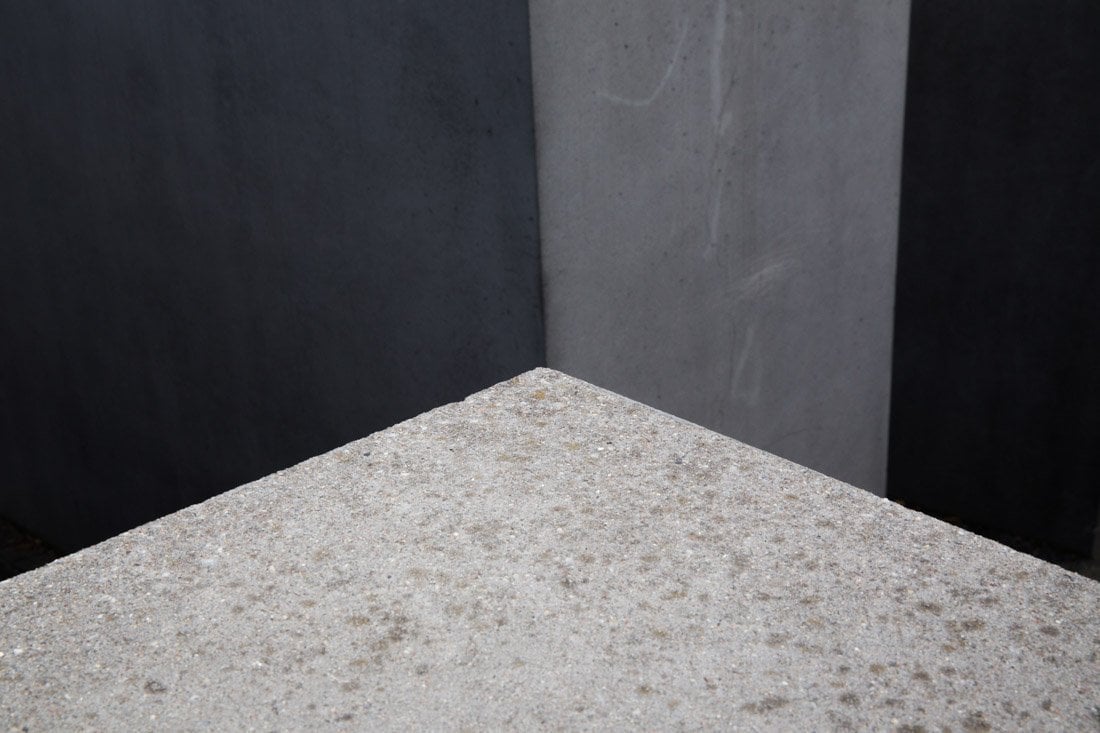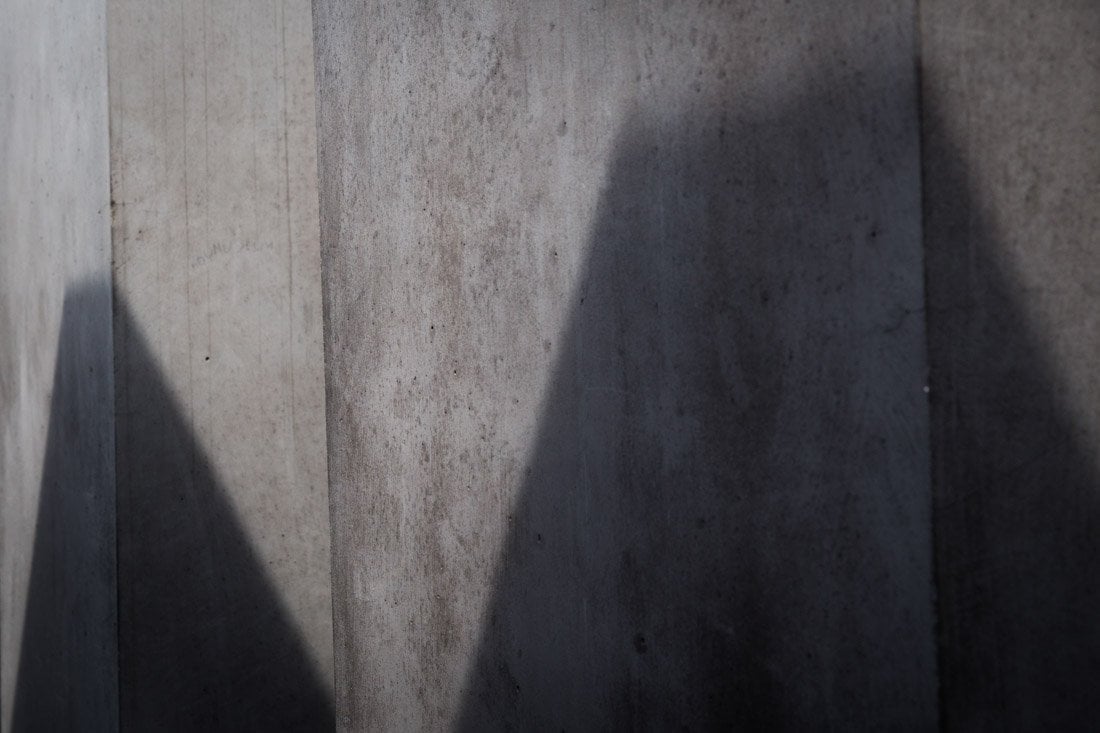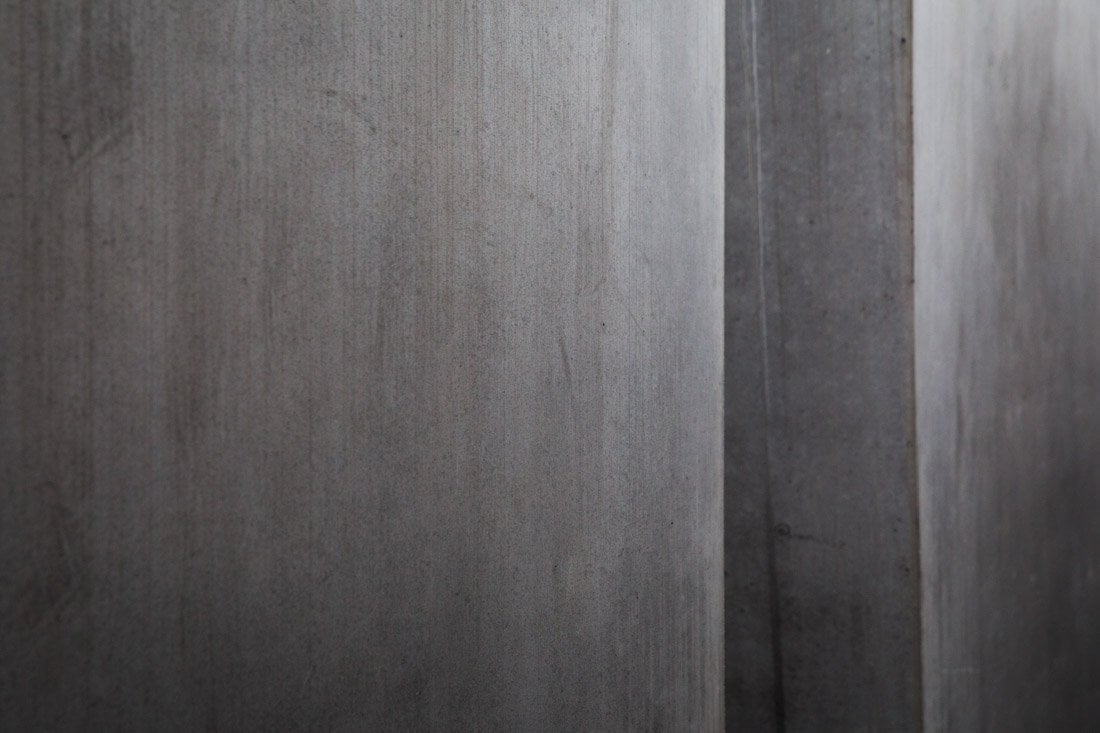In the heart of Berlin, a haunting and evocative memorial stands as a poignant reminder of one of the darkest chapters in human history. The Memorial to the Murdered Jews of Europe is a powerful tribute to the millions who lost their lives during the Holocaust.
Spanning an area of approximately 19,000 square meters, this labyrinth of 2,711 concrete slabs, known as stelae, offers a contemplative space for reflection and remembrance.
Designed by architect Peter Eisenman and engineer Buro Happold, the memorial provides a unique and immersive experience. As visitors walk through the maze-like pathways, the shifting heights of the slabs create an eerie sense of disorientation and isolation, symbolizing the confusion and despair experienced by the victims. The cold, grey stones and the absence of any inscriptions further emphasize the enormity and incomprehensibility of the tragedy.

The Memorial to the Murdered Jews of Europe is not only a solemn tribute, but also a testament to the power of a united commitment to ensuring such atrocities are never repeated. It serves as a call to remember, honor, and learn from the past, so that we may strive towards a more inclusive and understanding world in the future.
Historical background of the memorial
The Memorial to the Murdered Jews of Europe was officially inaugurated on May 10, 2005, marking the 60th anniversary of the end of World War II. However, the idea for the memorial had been in the making for over a decade. In 1988, a group of citizens and organizations in Berlin established the “Initiative for a Memorial to the Murdered Jews of Europe” with the aim of creating a permanent memorial in the heart of the city.
The memorial was a response to the lack of any central memorial to the Holocaust in Berlin, the capital of the Nazi regime during World War II. The initiative gained momentum, and in 1999, an international design competition was held to select the architectural concept for the memorial. The winning design by architect Peter Eisenman and engineer Buro Happold was chosen from over 500 submissions.
The design of the memorial was met with both praise and criticism. Some saw it as a fitting tribute to the victims, while others felt that it was too abstract and did not effectively convey the horrors of the Holocaust. Nevertheless, construction began in 2003, and the memorial was completed two years later.

Design and architecture of the memorial
The Memorial is a unique architectural masterpiece. The memorial consists of a grid of 2,711 concrete slabs, or stelae, arranged in a wave-like pattern across the site. The slabs vary in height, with the ground sloping downwards towards the center of the memorial. This creates a sense of disorientation and unease as visitors navigate through the maze-like pathways.
The slabs are made of gray concrete, giving them a cold and somber appearance. There are no inscriptions or names on the slabs, leaving their meaning open to interpretation. The lack of any explicit narrative allows visitors to project their own emotions and thoughts onto the memorial, making it a deeply personal and introspective experience.
The design of the memorial also incorporates an underground information centre, which provides visitors with historical context and personal stories of Holocaust victims. The centre serves as a reminder of the individual lives that were lost and helps to humanize the enormity of the tragedy.

Visitor experience at the memorial
A visit to this memorial is a powerful and emotional experience. As visitors enter the memorial, they are immediately confronted by the towering slabs, creating a sense of awe and reverence. The shifting heights and uneven ground make it challenging to maintain a sense of direction, amplifying the disorienting effect of the design.
Walking through the maze-like pathways, visitors may feel a mix of emotions – sadness, reflection, and a profound sense of loss. The quietness of the memorial allows for introspection and encourages visitors to contemplate the horrors of the Holocaust and the importance of remembrance.
Despite its solemn atmosphere, the memorial also serves as a gathering place for people from all walks of life. It is not uncommon to see visitors sitting, talking, or simply observing the surroundings. The memorial acts as a catalyst for discussions about the Holocaust, tolerance, and the importance of standing up against injustice.
I visited early one morning with my wife and then later the same day with my daughters. I found the first visit personally very moving. The second visit was then spent explaining, if it can be ‘explained’, the Holocaust to my daughters.
They, of course, had learnt about it at school but visiting Berlin and the memorial perhaps made it slightly more real to them – although the realities of the horrors are unimaginable to me and I suspect everyone who didn’t live through it.
Controversies surrounding the memorial
The design of the Memorial to the Murdered Jews of Europe has not been without controversy. Some critics argue that the abstract nature of the memorial fails to convey the true horrors of the Holocaust. They believe that a more explicit representation of the atrocities would have been more effective in educating visitors about the historical context.
Others criticize the lack of any mention of the perpetrators or the Nazi regime in the memorial’s design. They argue that by focusing solely on the victims, the memorial overlooks the broader historical context and the responsibility of those who carried out the atrocities.
However, defenders of the memorial argue that its abstract design allows for a more universal and personal connection with the victims. They believe that by leaving the interpretation open, the memorial encourages visitors to reflect on the broader implications of the Holocaust and the lessons that can be learned from it.

Importance of remembering the Holocaust
The memorial serves as a powerful reminder of the importance of remembering the Holocaust. It serves as a testament to the millions of lives lost and the countless families torn apart. By providing a space for reflection and remembrance, the memorial ensures that the memory of the Holocaust remains alive in the collective consciousness.
Of the 12 million people exterminated by the Nazis 6 million where Jews – estimated to be approximately 2/3rds of the European Jewish population at the time. The other 6 million were gypsies, homosexuals, Jehovah’s Witnesses and the disabled.
Remembering the Holocaust is not only a tribute to the victims but also a vital step in preventing such atrocities from happening again. By educating future generations about the horrors of the past, we can foster a sense of empathy, tolerance, and understanding. The memorial serves as a call to action, reminding us of our responsibility to speak out against discrimination, prejudice, and hatred in all its forms.
Other Holocaust memorials in Berlin
In addition to the Memorial to the Murdered Jews of Europe, Berlin is home to several other Holocaust memorials that are worth visiting. The Jewish Museum Berlin, designed by architect Daniel Libeskind, offers a comprehensive overview of Jewish history and culture, with a particular focus on the Holocaust.
Another notable memorial is the Topography of Terror, located on the site of the former Gestapo and SS headquarters. This outdoor and indoor exhibition provides a chilling insight into the machinery of the Nazi regime and its role in the Holocaust.
These memorials, along with many others in Berlin, offer a comprehensive and nuanced understanding of the Holocaust and its lasting impact on society.
Tips for visiting The Memorial to The Murdered Jews of Europe
– Allow ample time for reflection: The memorial is designed to be experienced at a leisurely pace. Take your time to explore the pathways, reflect on the meaning behind the slabs, and absorb the solemn atmosphere.
– Respect the space: The memorial is a place of remembrance and contemplation. Maintain a respectful demeanor, refrain from loud conversations, and be mindful of the emotional impact the memorial may have on others.
– Visit the underground information centre: The information center provides valuable context and personal stories that enhance the visitor experience. Take the time to explore this important resource.
– Consider guided tours: Guided tours can provide additional insights and historical context that may enhance your understanding of the memorial. Many tour operators offer specialized tours focusing on the Holocaust and Berlin’s history.
My photographs are minimal in nature. This time I think it suits the subject.
You may also like:








